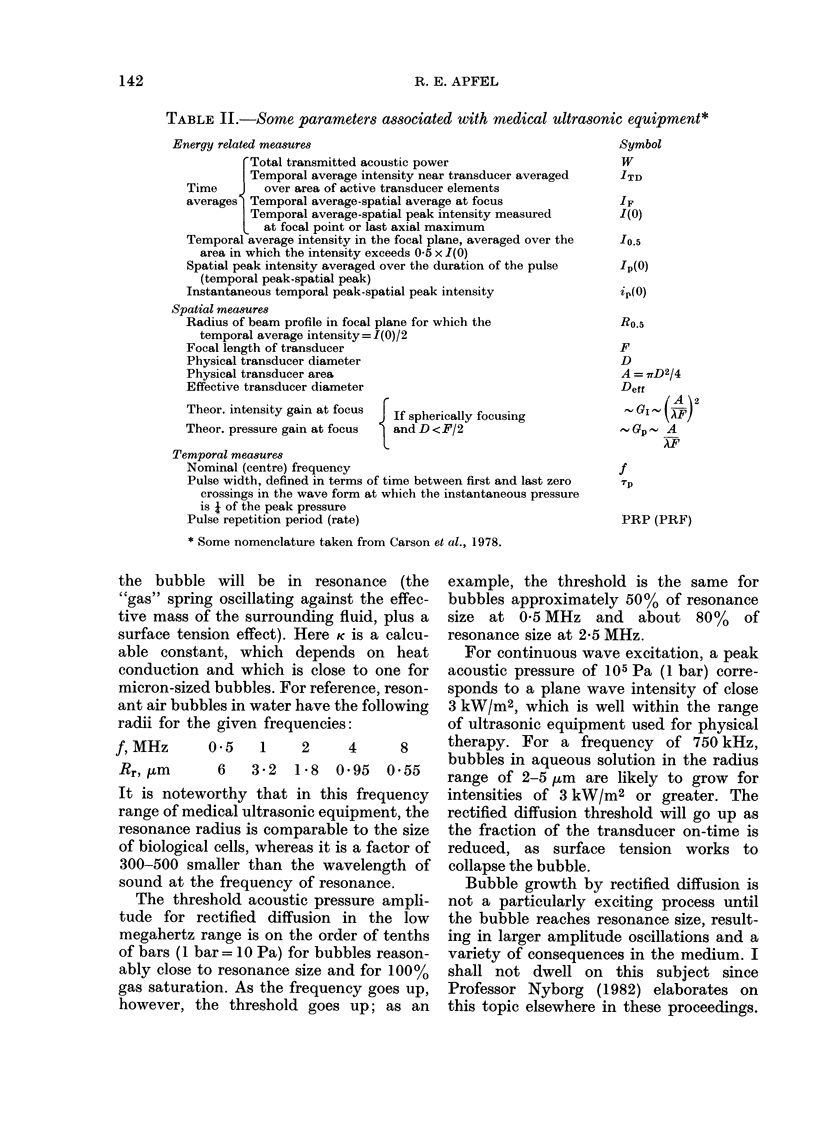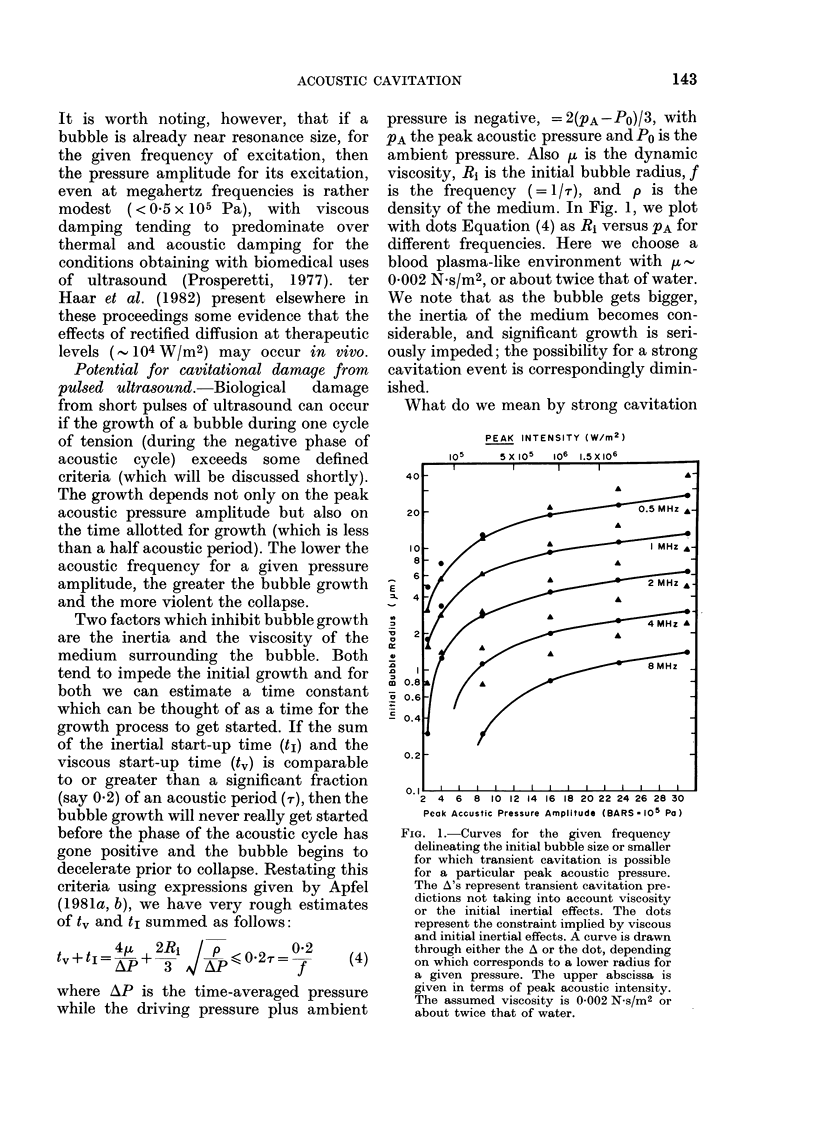Abstract
Those concerned with acoustic cavitation often use different measures and nomenclature to those who employ ultrasound for medical purposes. After illustrating the connections between the two, acoustic cavitation phenomena are divided into two classes: (1) relatively moderate amplitude changes in the bubble size that occur during each acoustic cycle, as with rectified diffusion and resonant bubble motion, and (2) rather dramatic changes in the bubble radius that occur in one cycle. It is seen that pulse-echo diagnostic equipment can excite the dramatic changes whereas continuous wave therapeutic equipment will excite the slower, but no less important, changes. The ranges of the acoustic variables and material states for which these phenomena are possible are quantified. It is shown that whereas the concept of an ultrasonic (energy) dose may be appropriate for the effects of acoustically induced heating or resonant bubble motion. It is inappropriate when discussing the effects of the transient type of cavitation that can occur from short, high amplitude acoustic pulses.
Full text
PDF






Selected References
These references are in PubMed. This may not be the complete list of references from this article.
- Carson P. L., Fischella P. R., Oughton T. V. Ultrasonic power and intensities produced by diagnostic ultrasound equipment. Ultrasound Med Biol. 1978;3(4):341–350. doi: 10.1016/0301-5629(78)90076-5. [DOI] [PubMed] [Google Scholar]
- Lewin P. A., Bjørnø L. Acoustic pressure amplitude thresholds for rectified diffusion in gaseous microbubbles in biological tissue. J Acoust Soc Am. 1981 Mar;69(3):846–852. doi: 10.1121/1.385540. [DOI] [PubMed] [Google Scholar]
- Nyborg W. L. Ultrasonic microstreaming and related phenomena. Br J Cancer Suppl. 1982 Mar;5:156–160. [PMC free article] [PubMed] [Google Scholar]
- ter Haar G., Daniels S., Eastaugh K. C., Hill C. R. Ultrasonically induced cavitation in vivo. Br J Cancer Suppl. 1982 Mar;5:151–155. [PMC free article] [PubMed] [Google Scholar]


